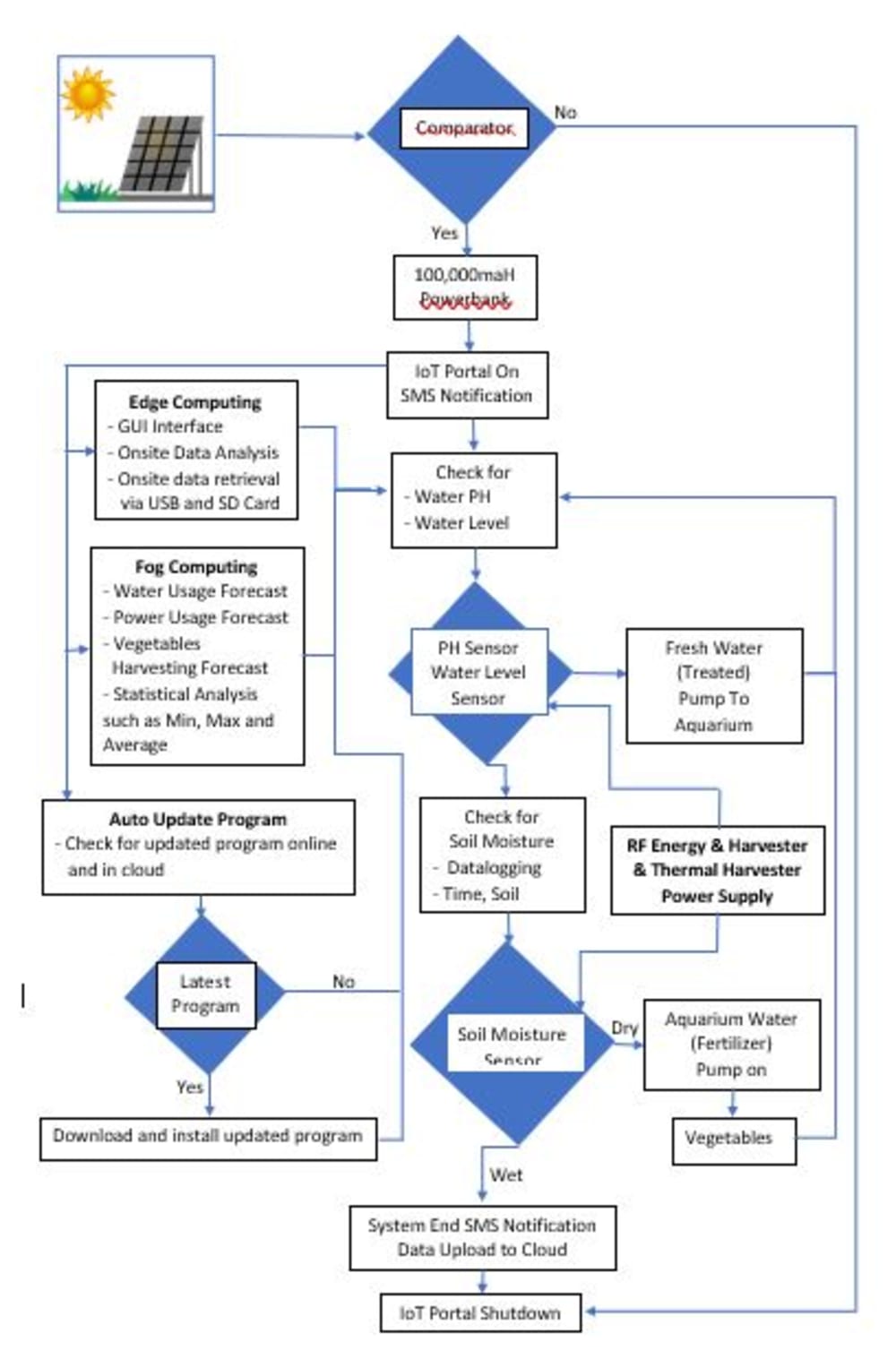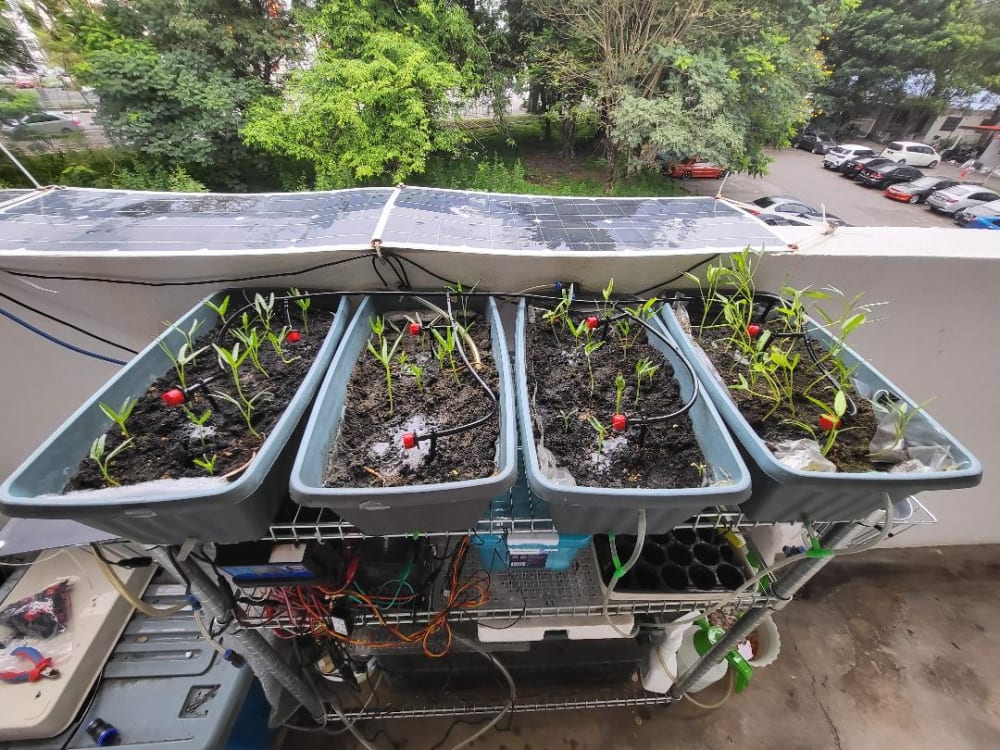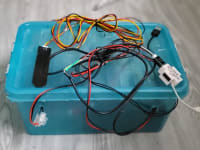With the advent of war between Russia and Ukraine and the recovery from COVID-19, we can see that there is a noticeable shortage of food for the population. Having food nearby will be cost saving and convenient in terms of supply chain. This can be seen in several studies such as Resource Use Efficiency in Urban Farming: An Application of Stochastic Frontier Production Function by Gabriel S. Umoh in INTERNATIONAL JOURNAL OF AGRICULTURE & BIOLOGY.
In such studies, it seems that high population requires more food but the space for growing food is limited as the are is densely populated.
By having a Smart IoT Urban Farming using Soil Based Aquaponics Powered by Energy Harvester, farming can be done at home or nearby home. This can assist the shortage of food and reduce the price for food as it is nearby and readily available for consumption.
The Smart IoT Urban Farming using Soil Based Aquaponics Powered by Energy Harvester uses an IoT Portal to control the automation of water irrigation. The main component of this system is the IoT Portal which is more affordable than other controllers and is based on Debian Linux. It has operating temperatures between -40 degree Celsius to 80 degree Celsius and requires very little maintenance.
The IoT Portal can use graphical user interface making it user friendly and easily used by the public. The system uses sensors so that the amount of water is adequate and resources can be saved. It will use soil moisture sensor and PH sensor to monitor the water for the vegetables. When the soil is dry water will be supplied to the plants and fresh water will be added if the aquarium water PH is too acidic. The sensors will be powered by RF and thermal energy harvester. The Smart IoT Portal and the RF Energy transmitter will be powered by solar energy harvester. The system requires very minimal maintenance to suit the busy life of urban community.
The prototype and case study had been done. Attached is the picture of the case study. Hopefully by having an affordable automated IoT system, food shortages and inflation can be overcome. Providing more food for the public. This system is using organic fertilizer which can be more healthier for consumption.
Studies such as Adoption of the Internet of Things (IoT) in Agriculture and Smart Farming towards Urban Greening: A Review by A. A. Raneesha Madushanki et al in International Journal of Advanced Computer Science and Applications showed better yield with IoT applications.
Thus providing more food in limited spaces such as in urban area.
Like this entry?
-
About the Entrant
- Name:Mohd Nizam Bin Najib
- Type of entry:individual
- Software used for this entry:python
- Patent status:pending








